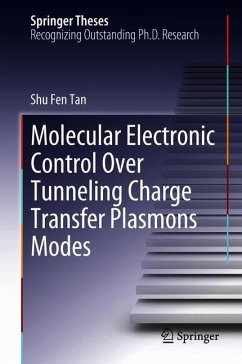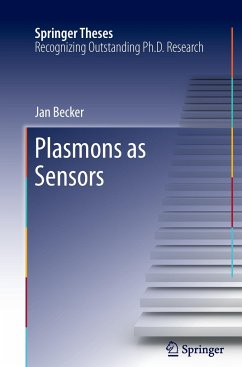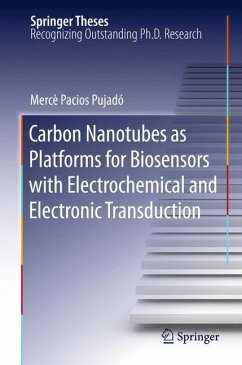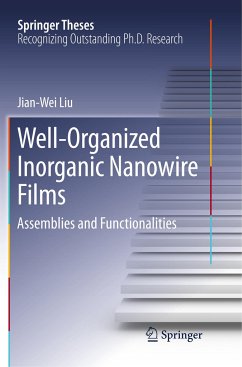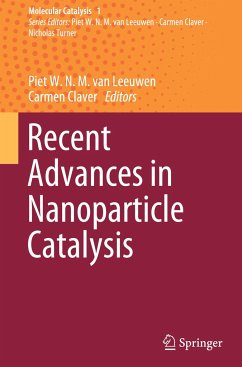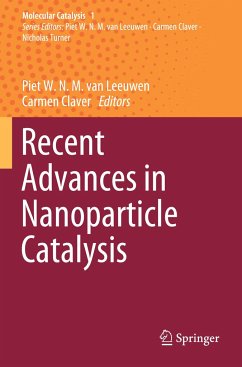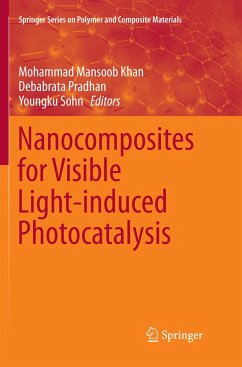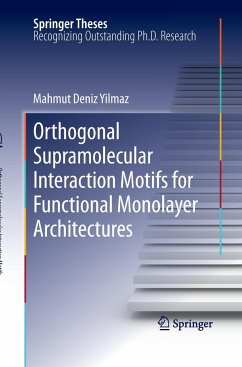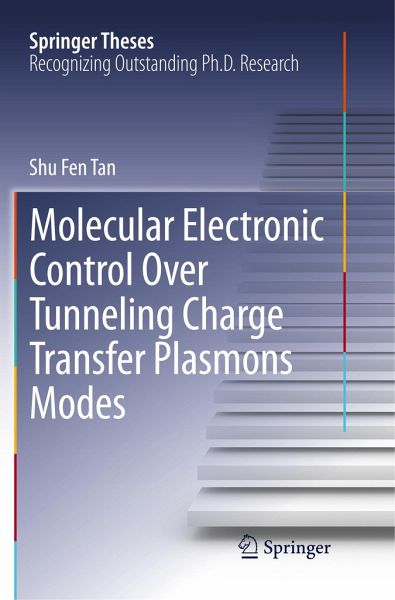
Molecular Electronic Control Over Tunneling Charge Transfer Plasmons Modes
Versandkostenfrei!
Versandfertig in 6-10 Tagen
76,99 €
inkl. MwSt.
Weitere Ausgaben:

PAYBACK Punkte
38 °P sammeln!
This thesis describes the controlled immobilization of molecules between two cuboidal metal nanoparticles by means of a self-assembly method to control the quantum plasmon resonances. It demonstrates that quantum-plasmonics is possible at length scales that are useful for real applications. Light can interact with certain metals and can be captured in the form of plasmons, which are collective, ultra-fast oscillations of electrons that can be manipulated at the nano-scale. Surface plasmons are considered as a promising phenomenon for potentially bridging the gap between fast-operating-speed op...
This thesis describes the controlled immobilization of molecules between two cuboidal metal nanoparticles by means of a self-assembly method to control the quantum plasmon resonances. It demonstrates that quantum-plasmonics is possible at length scales that are useful for real applications. Light can interact with certain metals and can be captured in the form of plasmons, which are collective, ultra-fast oscillations of electrons that can be manipulated at the nano-scale. Surface plasmons are considered as a promising phenomenon for potentially bridging the gap between fast-operating-speed optics and nano-scale electronics. Quantum tunneling has been predicted to occur across two closely separated plasmonic resonators at length scales (<0.3 nm) that are not accessible using present-day nanofabrication techniques.
Unlike top-down nanofabrication, the molecules between the closely-spaced metal nanoparticles could control the gap sizes down to sub-nanometer scales and actas the frequency controllers in the terahertz regime, providing a new control parameter in the fabrication of electrical circuits facilitated by quantum plasmon tunneling.
Unlike top-down nanofabrication, the molecules between the closely-spaced metal nanoparticles could control the gap sizes down to sub-nanometer scales and actas the frequency controllers in the terahertz regime, providing a new control parameter in the fabrication of electrical circuits facilitated by quantum plasmon tunneling.



